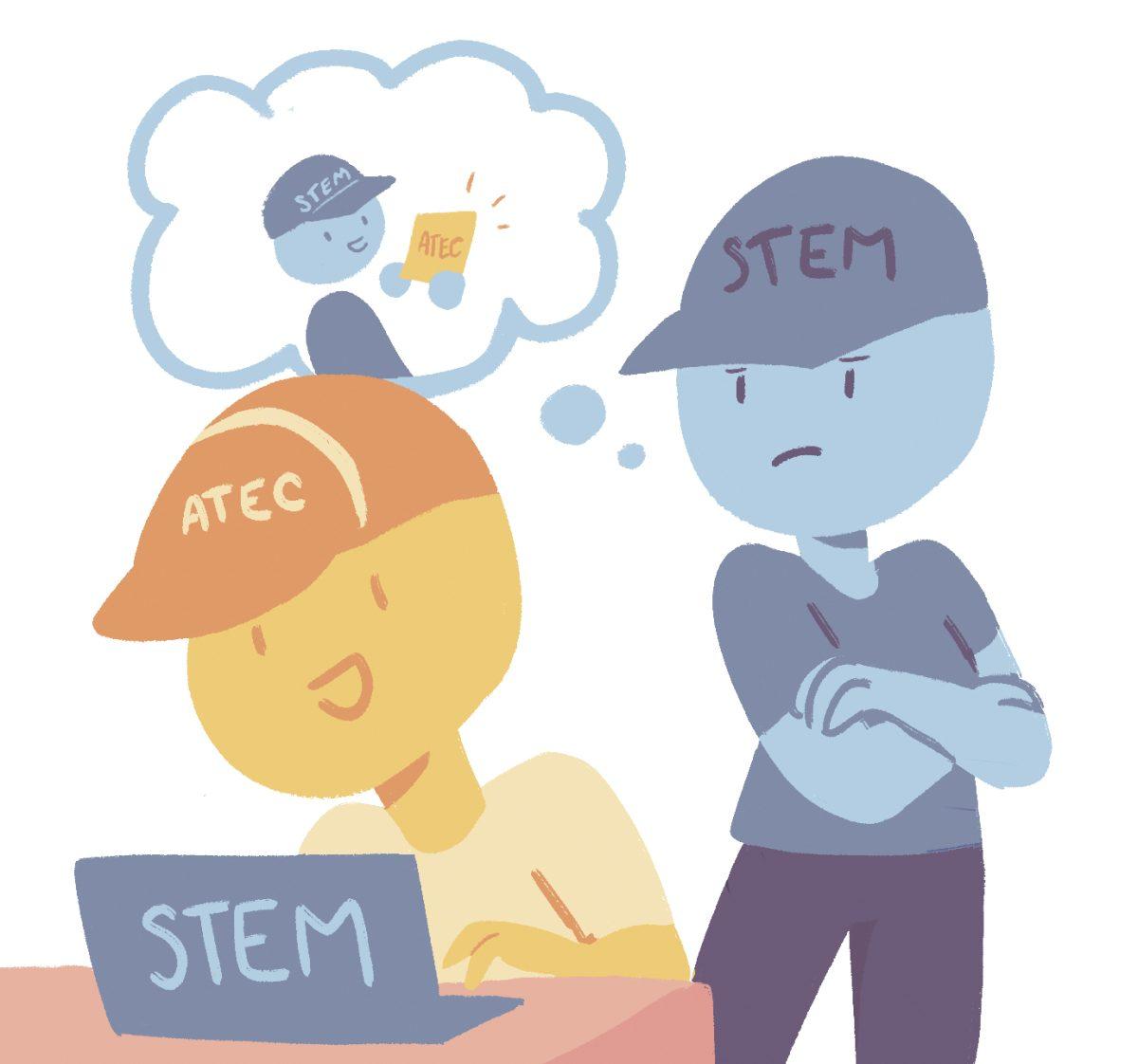
Graphic by Chiamaka Mgboji | Mercury Staff.
This past Friday, I read the March 11 opinion article published in The Mercury titled “Letter to the Editor: How to Help ATEC Grads Improve Job
Prospects,” which proposed that ATEC students should be required to take
on a STEM minor in order to increase the chance of getting a job after
graduation and improve the STEM departments at UTD.
As it stands, there’s an uneven exchange. ATEC students can minor in a
STEM field, but STEM majors can’t minor in an ATEC pathway. The option of a
double major is on the table for STEM students, but some don’t have the time or
money to pursue that many hours. Others just want to gain some — but not
expert-level — experience and skills in the fields ATEC encompasses. Still,
others are on scholarship and can’t risk a lower GPA by dividing their
attention equally between the two. Nothing is stopping these students from
taking a few courses a semester if they have the space to, but if they took as
many hours in the ATEC curriculum that equals or exceeds the amount of a minor,
the dedication and effort put into expanding their skillset would not be justly
recognized. Furthermore, if ATEC were to put a requirement such as this into
effect, it would create a standard that suggests having just an ATEC degree
isn’t good enough. The fact that STEM students aren’t being encouraged to take
ATEC classes through the offering of a minor only amplifies this notion.
I
understand that this suggestion was coming from a scientist who sees the value
and potential of integrating this emerging field with STEM research. However,
the proposed suggestion may not create the desired outcome. To many ATEC students,
it would be a forced collaboration, as they initially chose ATEC because of
their desires to pursue design, production or media studies — not to learn how
to synthesize it with a science or math “of choice.” Students should retain the
ability to choose whether they want to minor in one of these fields. Interest
in interaction with STEM research and applications varies significantly among
students. It would be unfair to those who have absolutely no
enthusiasm for it, especially if they already had a minor in mind that doesn’t
fall under the STEM umbrella. However, the “T” in both ATEC and STEM stands for
“technology.” What makes the technological aspect of ATEC any less attractive
than the technological aspect of STEM?
I fully agree that there are plenty of potential employment opportunities
for students possessing all the above skills, but taking one up without
truthfully having a passion for both areas will only hinder the creative
potential of both the graduate and their new employer. But if the need is that
great, then the first step should be to open the opportunity for ATEC minors.
There is so much untapped creative potential as well in STEM students who might
have had a difficult time deciding between their current major and ATEC. Plenty
of them probably strive for these same opportunities, but their game plans
involve prioritizing expertise in their STEM field and gaining the needed
technological and design abilities along the way, something that could be eased
if UTD offered an official path towards those ambitions. Not offering this
option could be interpreted as the university believing that dedicated
scientists can’t reach the same creative abilities as a non-scientist, or that
developing the creative side of themselves isn’t as desired as developing their
STEM side.
The notion that one’s analytical and creative mind — the overall
configuration of an individual’s personality and talents — cannot successfully
develop at the same time antagonizes the culmination of new, greater
innovators. We need more Leonardo da Vincis and more Galileo Galileis. UTD
already provides an excellent college education, but an increased focus on
exercising and appreciating skills in both the arts and sciences would truly
improve our campus in both research and camraderie among schools of study.
Amanda Maceda is a
chemistry sophomore from Dallas.